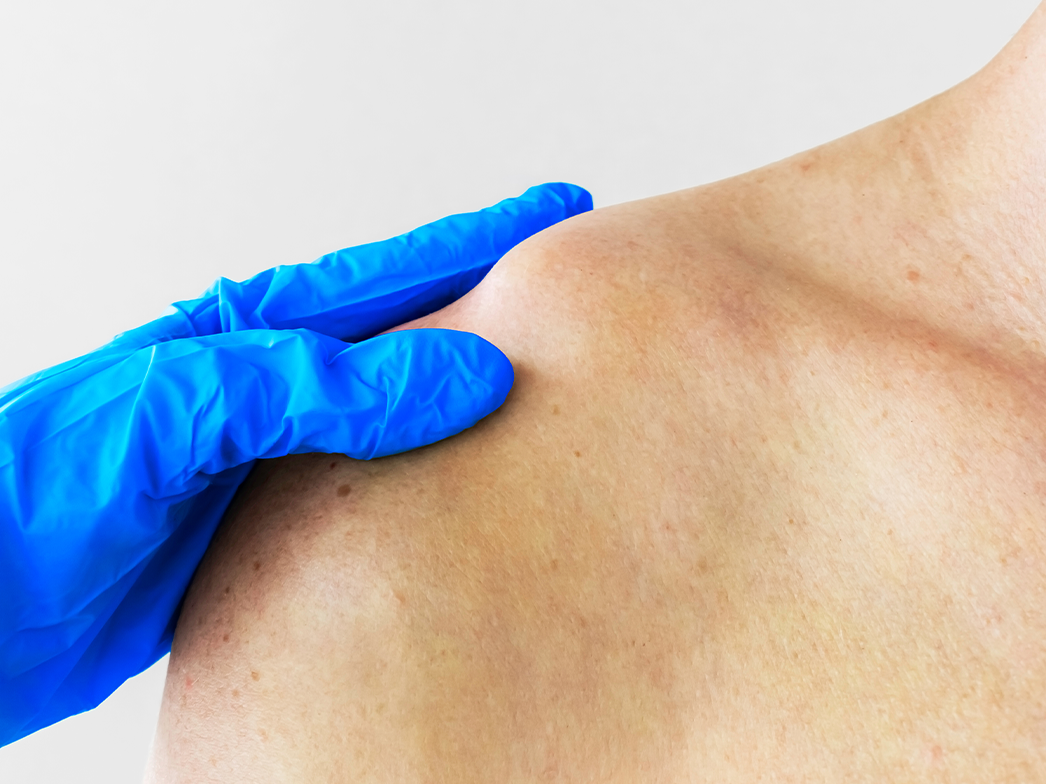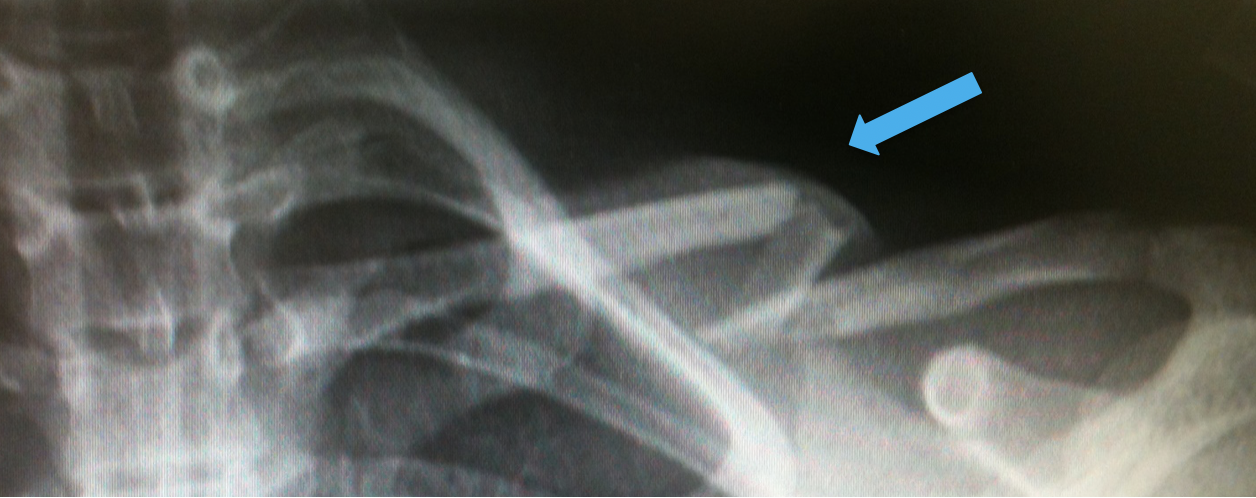What is the clavicle?
The clavicle is also known as the collarbone and runs along the top of the chest connecting the sternum (breastbone) to the scapula (shoulder blade). The clavicle acts to connect the arm to the rest of the body. It can be felt and seen on the front of the body in the area between the neck and shoulder.
What are clavicle fractures?
The collarbone is one of the most commonly fractured bones among children and teens. This is because it takes on a large portion of the stress during a fall or direct blow to the upper body.
Clavicle fractures can be classified based on where the fracture is located on the bone:
- Type 1: Middle third – most common
- Type 2: Lateral third (outer)
- Type 3: Proximal third (inner) – least common
Causes:
Many collarbone injuries occur during sports, particularly contact sports like football, hockey, and lacrosse. They can also occur in sports like biking, skateboarding, and skiing due to high impact falls. These can also occur during the delivery of a baby and are known as “birth fractures”.
Signs and Symptoms:
A broken collarbone will typically manifest with pain over the affected area. Other symptoms may include:
- Swelling and bruising along the collarbone
- Difficulty moving the affected arm
- Pain with movement of the affected arm or shoulder
- Hearing or feeling a “grinding” or “crackling” when moving the arm or shoulder
- A visible deformity around the collarbone
- Slumping of the shoulder on the affected side


